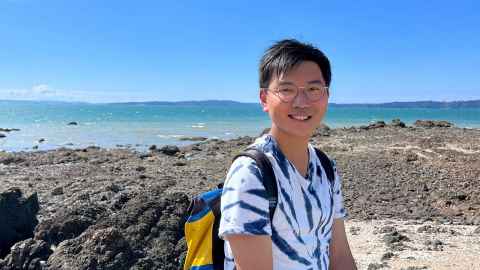Martin Cheng
PhD candidate Martin is passionate about his research on the New Zealand green lipped mussel and enjoys the collaborative nature working between the University and the Cawthron Institute.

Programme: PhD in Biological Sciences
Subject: Marine Biology
Martin has been interested in studying mussel species since his Master of Philosophy in Marine Biology, which he completed in Hong Kong. He is now in the second year of his PhD research on New Zealand green lipped mussels.
Martin is researching to find the best way to make mussels inactive while maintaining their quality for live transportation. This is important because it can reduce damage and mortality rates. This is also great for “the sustainability of the bivalve aquaculture industry in New Zealand as less waste will be generated and as such resources can be better utilized.”
Martin chose the University of Auckland for his PhD research two reasons. Firstly, because his now-supervisor, Dr Brendon Dunphy, secured funding for a PhD position in collaboration with the Cawthron Institute to study the NZ green lipped mussel. This means Martin can work between the University and the Cawthron Institute. He has plenty of resources for experiments and can apply research to a real-world aquaculture industry, “increasing the impact of my study.”
Secondly, because of the University’s commitment to high-quality education and research.
The University of Auckland is internationally famous in terms of education and
research quality.
He says that “everyone in the research team is very supportive and friendly. My supervisor Brendon Dunphy is always so encouraging to me. The programme also provides proper guidance to keep my study on track. I am grateful to receive this support especially during the pandemic.”
After completing his PhD, Martin wants to build his career in academia and continue research on mussels and other bivalve species. He wants to look at their “importance in the marine ecosystem and how they respond to future climate change conditions.”